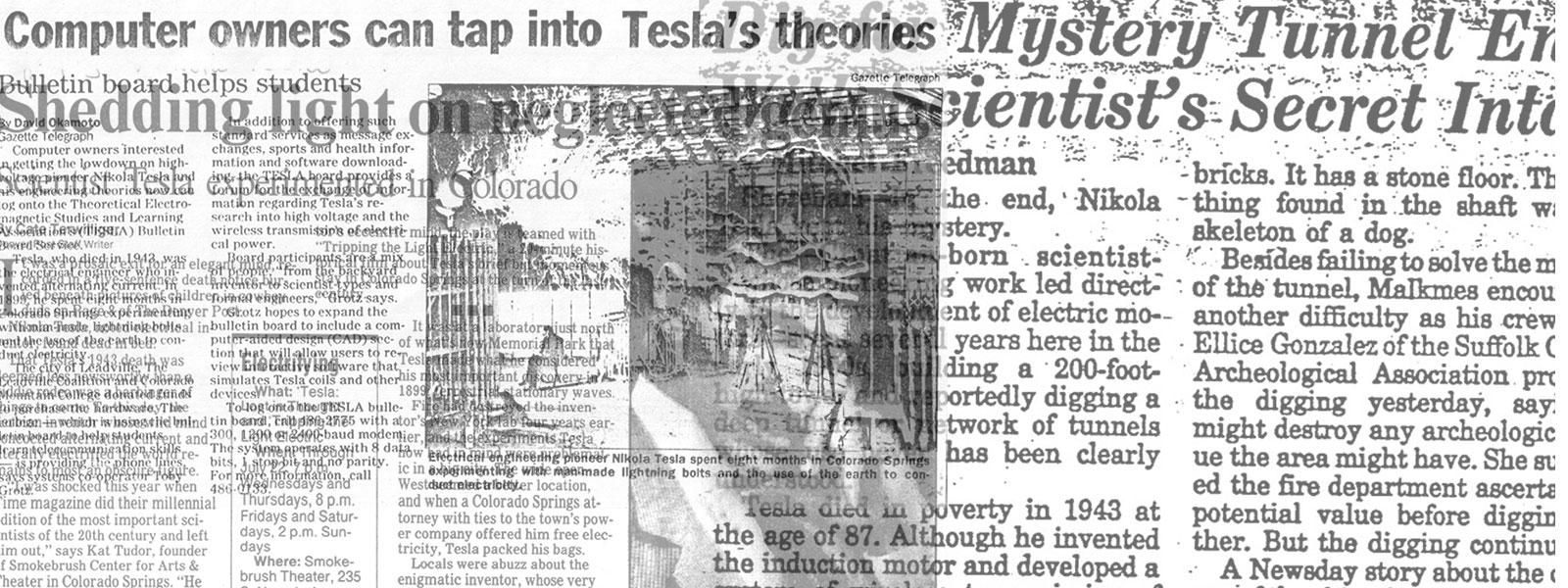
Nikola Tesla Articles
M. Tesla's Experiments - To "L."
Without going very deeply into a description of the apparatus used by M. Tesla in his experiments with electricity at high voltage, and which have been recently described in the “E. M.,” it will be well to remember that the essential portions were an alternating dynamo to produce alternating waves of current of considerable quantity (in amperes), but of comparatively low voltage, say 100 volts. This current is passed through one or more transformers (species of induction coils), which transform upwards - i.e., increase the voltage while lowering the amperage. To these transformers are connected condensers, to accentuate these effects, and also in special cases rheotomes to increase the rapidity of the alternations. By giving suitable proportions to the transformer, the voltage may be increased from 110 to 50,000, 150,000, or, as shown by Sir W. Thomson, to nearly a million volts, the current in amperes being, of course, diminished in like proportion. If now suitable connections are made to the terminals of the transformer, a number of experiments can be performed. The simplest consists in showing that the whole atmosphere in the neighbourhood of the two conductors (which may be wires or plates, at several feet apart) is in a state of induced strain under the influence of these enormous voltages, and that disruptive discharges take place in the form of faint glowing brushes all along the surfaces of the conductors. Another beautiful experiment, novel in this form, but well known to workers with the Wimshurst machine, is the illumination of vacuum tubes placed in the space neighbouring the conductors.
At the Crystal Palace, where these experiments are daily repeated by Messrs. Siemens, with a pressure of about 60,000 volts, and independently by Mr. Swinburne with a pressure of 130,000 volts. These results are well shown, though on a smaller scale than those instituted by M. Tesla, and without any special appliances for increasing the rapidity of the alternations. But the possession of dynamo and transformer is by no means necessary for the production of these experiments. Anyone possessed of a good plate electric machine, or, better still, a Wimshurst capable of giving a 3in. spark, can illuminate vacuum tubes by holding or suspending them anywhere in the vicinity of the machine (within 6in. or 8in.) while the machine is being worked. In fact, considering the small power expended in setting up the high voltage, the results are much more striking in the case of the Wimshurst machine than they are when the dynamo and transformer are employed. The reason of this may probably lie in the fact that, although the actual current in ampères is very small in the case of the Wimshurst machine, as compared to the dynamo and transformer (owing to the enormous resistance of the air between the combs and the plates), yet also the voltage, for this very same reason, is more easily kept high. Among other experiments which can be performed with the high-voltage currents of the transformer are the breaking down of several bodies usually considered good insulators, such as slate, wood, glass, &c., the transmission of power along great distances through very fine wires, incapable of carrying heavy currents, but unaffected by the high voltage, which is afterwards transformed down to lower voltage and larger current by a downward transformer on arriving at the destination where the power is to be utilised in the electro-motor. As it is the quantity of electricity in amperes, irrespective of its voltage, which affects the human frame when current is passed through it, it is stated that, by passing a minute current of only a few milli-ampères (thousandths of ampères) through a man placed in circuit with one of these high voltage currents, which is afterwards transformed down to a large current at low voltage, which passes into an electro-motor, sufficient energy can be conveyed through the man, without any injury to him, to enable the motor to give ½H.P.
